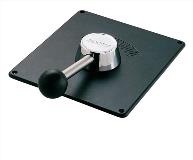O C Diver
Guru
- Joined
- Dec 16, 2010
- Messages
- 12,878
- Location
- USA
- Vessel Name
- Slow Hand
- Vessel Make
- Cherubini Independence 45
So I'm pondering replacing my autopilot. The old pilot that still works flawlessly is a Robertson Simrad AP 20, 21 (remote), FU35 (jog lever), and RFC35R (rate compass). It gets its steer information from the Garmin MFD over a NEMA 0183 network.
The Simrad I'm considering networks all it's pieces through the NEMA 2000 network.
My Garmin MFDs use a Garmin heading sensor for some functions including some aspects of the radar.
Currently, the AP20 system has a heading sensor that only talks to the autopilot black box.
So the questions are:
Do you use more than one heading sensor with a NMEA 2000 network?
If you use only one heading sensor (compass or GPS), what is the likelihood that Garmin and Simrad will both work off a 3rd party (other than the same manufacturer's) heading sensor?
Since the Simrad will accept NEMA 0183 comand from the Garmin MFDs, is there any reason to not set the autopilot up as it's own NEMA 2000 network, and import the data from the MFD on NEMA 0183?
Ted
The Simrad I'm considering networks all it's pieces through the NEMA 2000 network.
My Garmin MFDs use a Garmin heading sensor for some functions including some aspects of the radar.
Currently, the AP20 system has a heading sensor that only talks to the autopilot black box.
So the questions are:
Do you use more than one heading sensor with a NMEA 2000 network?
If you use only one heading sensor (compass or GPS), what is the likelihood that Garmin and Simrad will both work off a 3rd party (other than the same manufacturer's) heading sensor?
Since the Simrad will accept NEMA 0183 comand from the Garmin MFDs, is there any reason to not set the autopilot up as it's own NEMA 2000 network, and import the data from the MFD on NEMA 0183?
Ted


